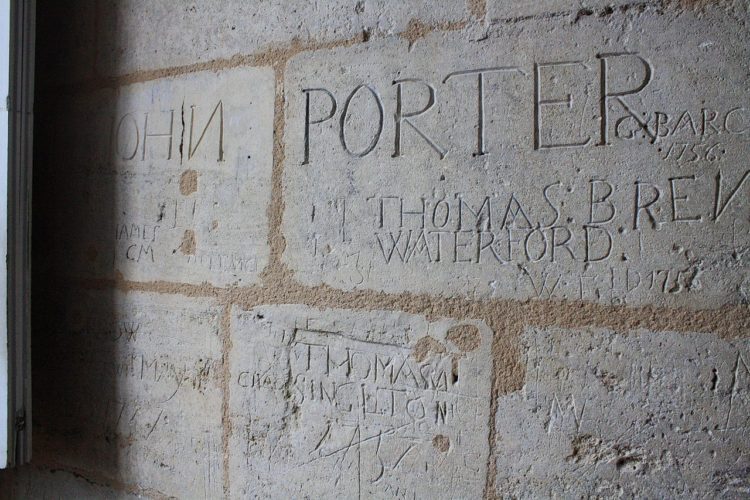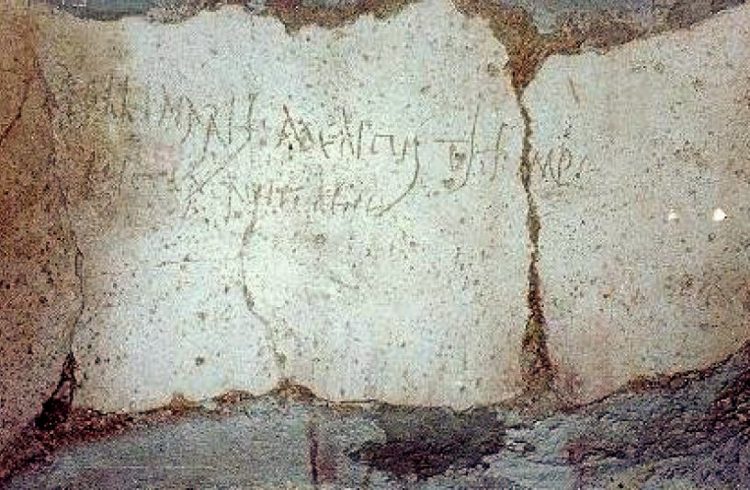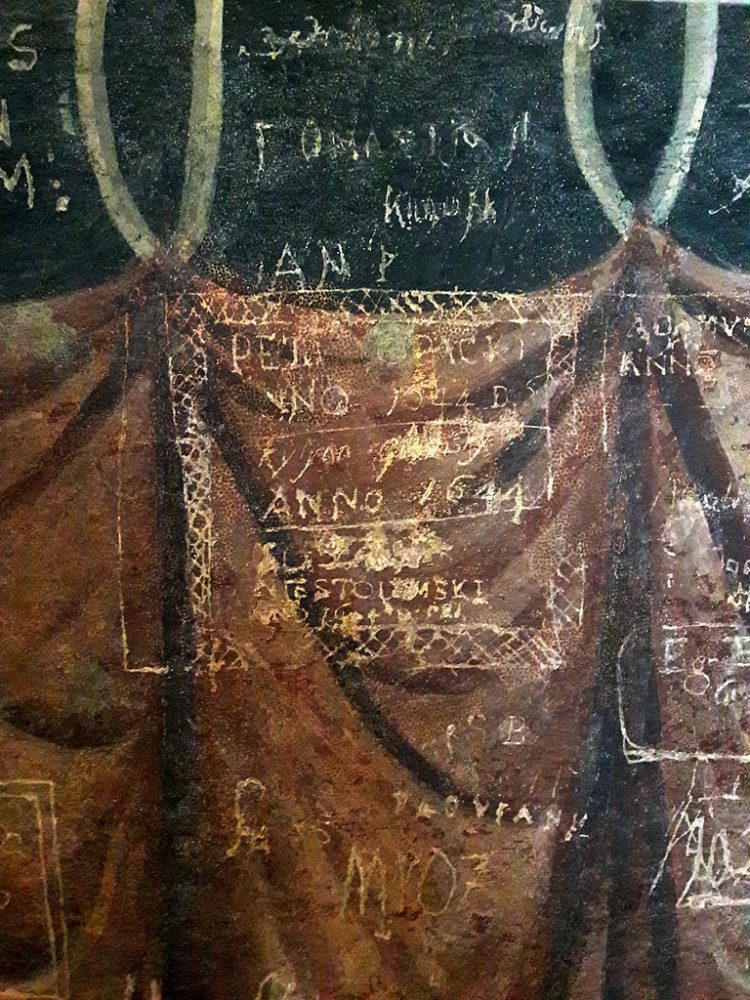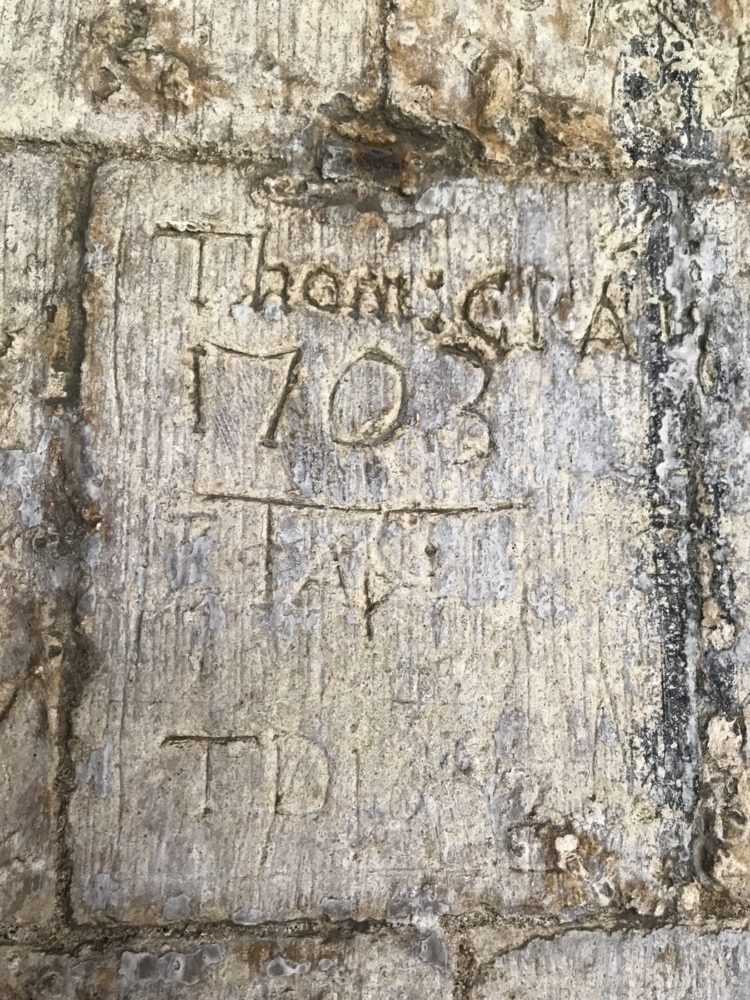How long has graffiti been around?
My grandmother says graffiti wasn’t common when she was growing up, and wasn’t really a problem until the 1960s. Could that actually be true?
Don’t blame anyone alive for inventing graffiti
While the sixties saw many changes in people’s behavior — the counterculture movement not least among them — graffiti was nothing new even then.
In fact, writing and/or drawing where you’re not supposed to has been a popular pastime for thousands of years (tens of thousands, if you consider prehistoric cave drawings a form of graffiti).

Graffiti goes way back
Proof of ancient graffiti has been found on archaeological digs and excavations in several different countries around the globe. These messages from across the ages have been scratched into plaster, etched into rock, and painted on a variety of surfaces.
Some of the most entertaining messages from yester-millenia come from the era when Rome was in its heyday.

In southern Italy, the cities of Pompeii and Herculaneum were buried by Mount Vesuvius’ devastating eruption in 79 AD, and so was preserved like a town-size time capsule.
Among the ruins, however, there was more discovered than just incredible artifacts and hollow spaces where bodies once were. There was plenty of ancient graffiti — and a lot of the things they scratched into stone two thousand years ago wouldn’t be suitable for polite company even today.
The photo below is from Herculaneum, and reads: “Apollinaris medicus Titi imp[eratoris] hic cacavit bene.” That translates to something like “Apollinaris, the doctor of the emperor Titus, had a good crap here.” (It’s unlikely it was actually written by the doctor, but was more likely a joke or jab at the stark classism of the ear.)

Aufidius was here
On the walls of the small city of Pompeii — preserved for nearly two thousand years — were lots of sex, booze and poop references… along with proclamations of love, thievery, jealousy and other tidings of human nature. Some (translated) scrawlings from the walls of Pompeii were compiled by pompeiana.org:
In the Julian-Claudian gladiators’ barracks: Celadus the Thracian gladiator is the delight of all the girls
In a house’s atrium: If anyone does not believe in Venus, they should gaze at my girlfriend
In a latrine: Secundus defecated here (written three times on one wall)
At an inn: We have wet the bed, host. I confess we have done wrong. If you want to know why, there was no chamber pot.
In the basilica (which served as a courthouse & banking center): Chie, I hope your hemorrhoids rub together so much that they hurt worse than they ever have before!
On the exterior of a small house: Gaius Sabinus says a fond hello to Statius. Traveler, you eat bread in Pompeii but you go to Nuceria to drink. At Nuceria, the drinking is better.
In the basilica: O walls, you have held up so much tedious graffiti that I am amazed that you have not already collapsed in ruin.
Graffiti around the world
There are almost certainly millions of scrawlings lost to time, and really the only things that make these truly unique is that they managed to survive.
As such, they give us a snapshot into the everyday life of the past — including the jokes, complaints and brags of the era — along with the universal human desire to leave a mark on the world.



Global graffiti
Want to find out more about the scrawlings of the ancients? Check out what archaeologists and scholars have discovered in Egypt, England, Israel, Armenia, Italy and even the USA.







